HealGrid is an addon which provides a "grid like" layout of the units in your party, warband and scenario. It's aim is to provide you with an easy way to quickly recognize the overall health state of the unit, together with the particular unit health for easy reaction - e.g. by healing, assisting or "pulling off".
Depending on the health of the unit, the boxes will change color. Starting with green when the unit is at full health, the color gradually changes to yellow for wounded units and red for really hurt units. This enables at a glance to judge the health of any given player.
The border of the boxes will be colored depending on the range of the unit. Colors are:
| black | range not known |
|---|---|
| green | unit in range or was in range at least 5 seconds ago |
| pale green | unit was in range at least 10 seconds ago and still might be in range |
| red | unit out of range or was out of range at least 5 seconds ago |
| pale red | unit was out of range at least 10 seconds ago and still might be out of range |
Why all these different colors? The problem is that the WAR API does not provide us with range information, so we have to use legal tricks and workarounds to calculate this. This is not always possible though, and that's why we have the different colors.
Thanx to all the addon authors out there, who put their effort into developing addons for the general public and make them publicly available. A special thanx to Aiiane for all the hard work in digging up all the API internals and providing this knowledge with us.

HealGrid consists of various unit-boxes. These contain the data for the various players, either yourself, your target, group members and so on. The makeup of these boxes is similar for all units and will be described here. For details of where to find particular unit information for the various boxes, please refer to the appropriate section in this manual.Unit Name
The name of the player is displayed in the lower right corner of the box. It is only displayed for units where it makes sense to display it (e.g. it is not displayed for your avatar or your pet. The class-group is color-coded in the name, and the various colors mean:
| brown | Tanks (Iron Breaker, Swordmaster, Chosen, Black Orc) |
|---|---|
| red | Melee physical DPS (Witch Hunter, White Lion, Marauder, Witch Elf) |
| orange | Ranged physical DPS (Engineer, Shadow Hunter, Squig Herder) |
| yellow | Ranged magical DPS (Bright Wizard, Magus, Sorcerer) |
| lavender | melee support (Warrior Priest, Disciple of Khaine) |
| light blue | ranged support (Archmage, Shaman, Rune Priest, Zealot) |
Unit health is displayed in the middle of the box. It displayes the health of the unit in percentage.
Remaining action points are displayed in the lower right corner, as a percentage of total action points.
The debuffs of a unit are displayed in the top right corner of the box. The color codes are:
|
|

The HUD is the information about the "core units", which are (from left to right):
The leftmost box shows information about your avatar. Information printed in this box is:
| box background | colored health status, see background colors |
|---|---|
| border | colored health status, s, see border colors |
| center text | unit health in percentage |
| lower-left text | actionpoints of your avatar |
The to the right of the avatar box shows your pet, if you have one. If you do not have one, it is grayed out.
| box background | colored health status, see background colors |
|---|---|
| border | colored health status, s, see border colors |
| center text | unit health in percentage |
The box in the middle shows your friendly target. The friendly target is a unit which is friendly to you and whom you targeted. If you do not have a friendly target this box is grayed out.
| box background | colored health status, see background colors |
|---|---|
| border | colored health status, s, see border colors |
| center text | unit health in percentage |
| lower-left text | name of the player or npc, abbrevated to five letters |
Next to your friendly target is your hostile target. This is the player or mob you can attack. If you do not have a hostile target this box is grayed out.
| box background | colored health status, see background colors | ||||||||
|---|---|---|---|---|---|---|---|---|---|
| border | colored health status, s, see border colors | ||||||||
| center text | unit health in percentage | ||||||||
| lower-right text | The level difference of your target with your level. If the target has an higher level, this number is positive (+). If your targets level is lower than your level, the number is negative (-). The number can be appended by these qualifiers:
|
The rightmost box shows the target of your pet. If you do not have a pet or your pet does not have a target, this box is grayed out.
| box background | colored health status, see background colors |
|---|---|
| border | colored health status, s, see border colors |
| center text | unit health in percentage |
Attached to the bottom left (below your avatar and pet box), is the action point bar. The bar displayes your action points.
Located at the bottom, in the middle of the hud, is the morale bar. The bar indicates your progress towards the next morale level. Each reached level is indicated by a 'X' - so a 'X X X' and a half filled bar would mean that you have morale level three and are halfway to the next morale level. Please keep in mind that higher morale levels will be achieved slower than lower ones.
On the lower right of your HUD is the casting bar. It displays the progress of your casting towards spell execution time. If the spell is channeled, the bar will decrease from left to right, showing the remaining channel time.

In this box you can see your group members. Your avatar is not included in this overview. There can be at most five members in a group (excluding yourself).
The members of your warband are displayed here, with your avatar included. There can be four groups in a warband, each consisting of six members.

The scenario group are all the members of a scenario in active groups.
You can move the windows around on the screen with the in-game layout editor. Just access the layout editor and move the frames called "HealGrid (XXXX)" to the position where you like them to appear. "(XXXX") stands for the type of windog, e.g. "HUD" or "Warband".
All HealGrid settings and options can be configured with a graphical user interface. To bring up the GUI type "/healgrid" in the chatbox (without the quotes "). You must have LibSlash installed for the command to work though (Download it from war.curse.www)
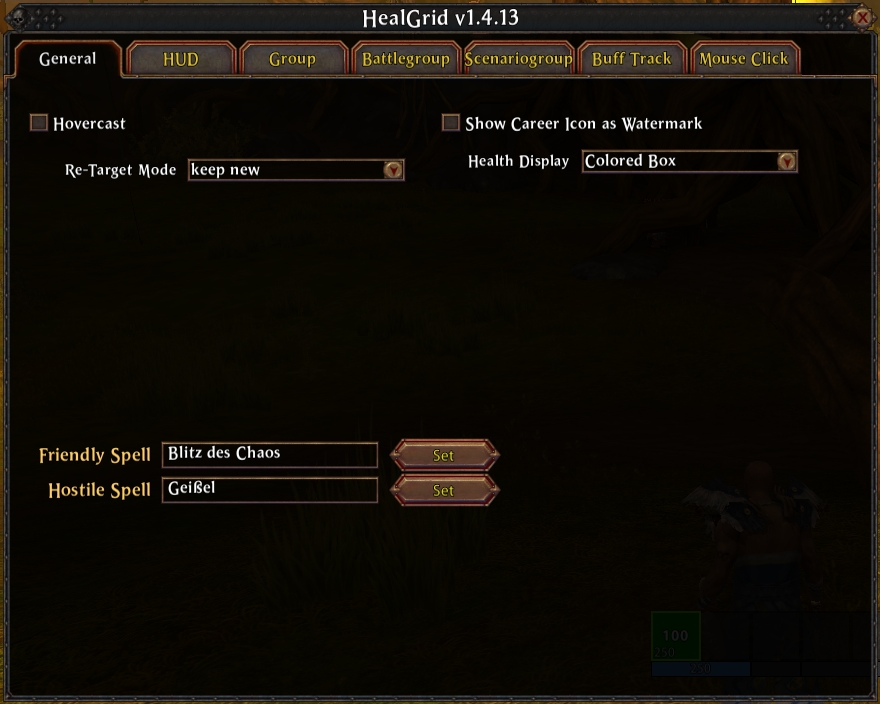
Settings applying to HealGrid as a whole can be configured here.
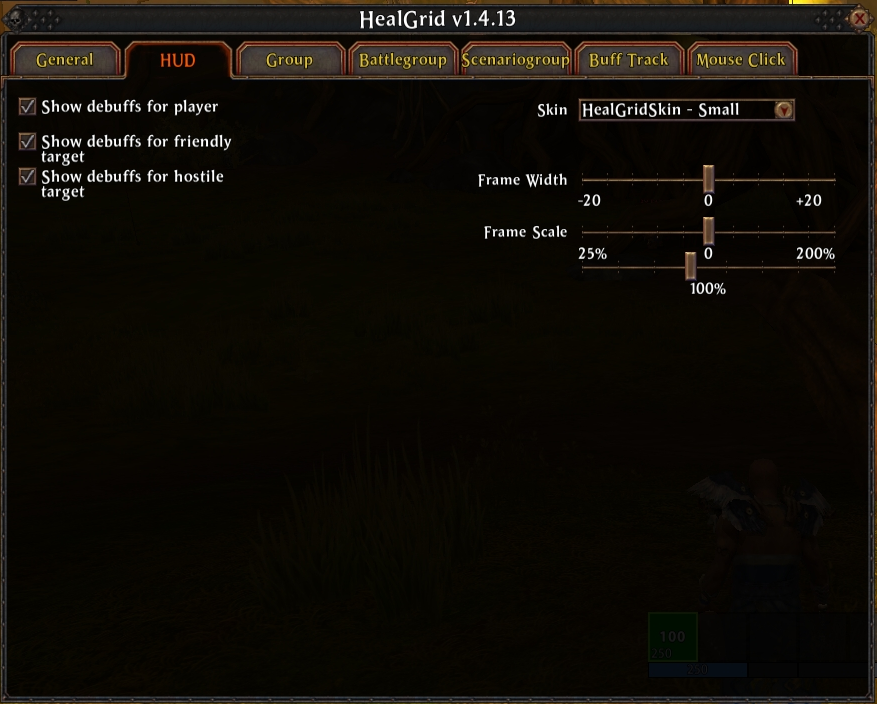
Here you can configure settings applying to the HUD, the "Head's Up Display".
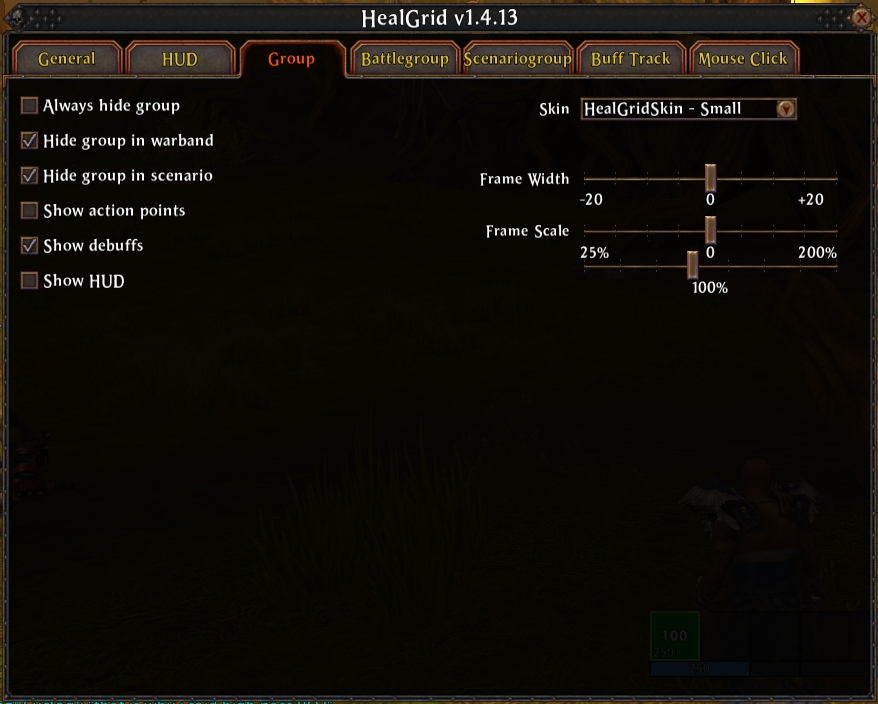
Settings applying to your group can be configured in this tab.
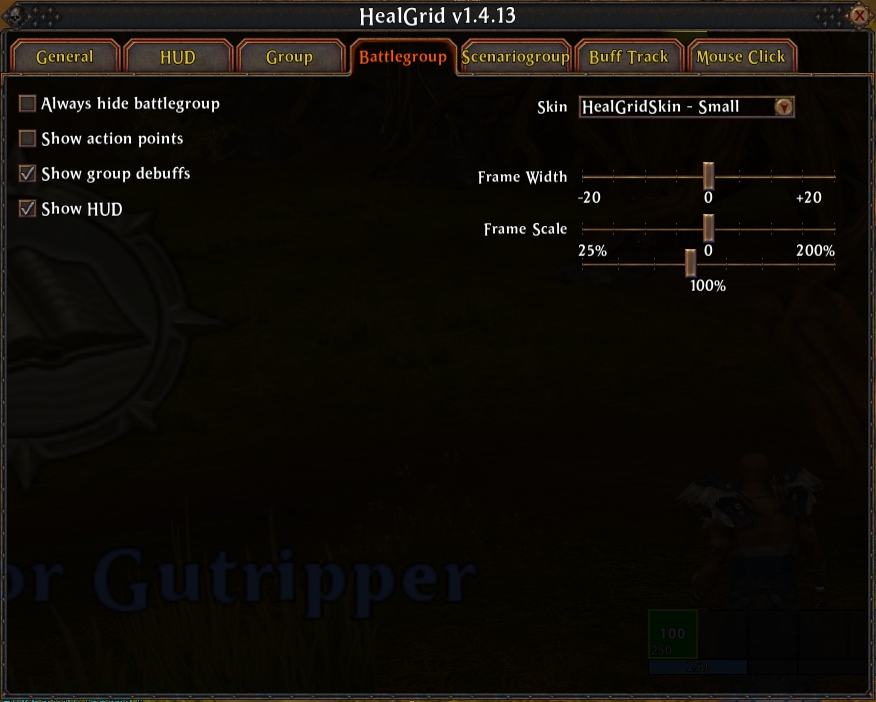
In this tab settings refering to your warband can be set up.
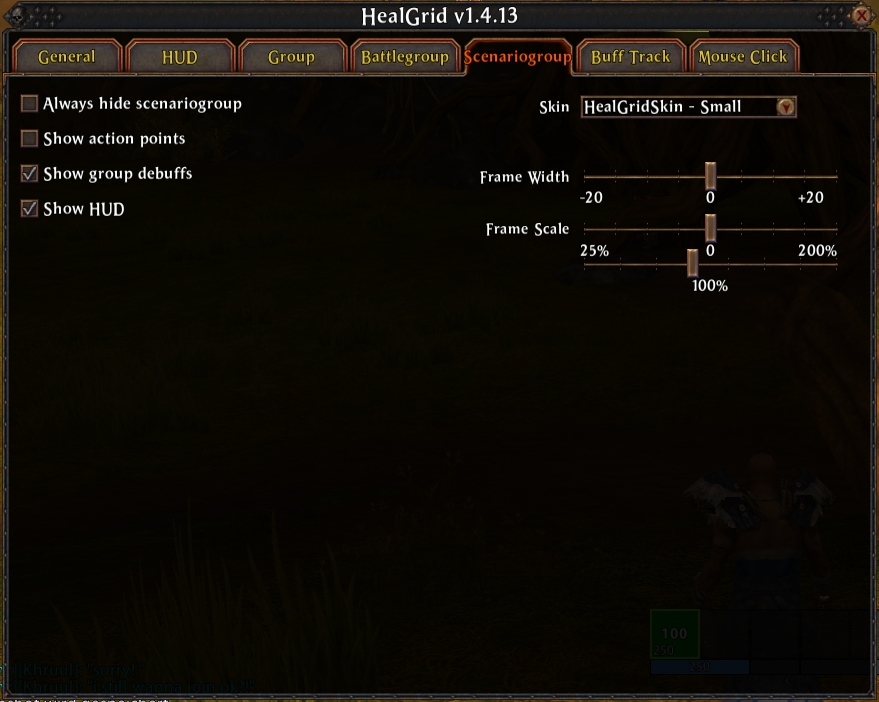
Options applying to the scenariogroup can be configured in this tab.

In this tab you can set up and confgure how HealGrid will track spells for you.
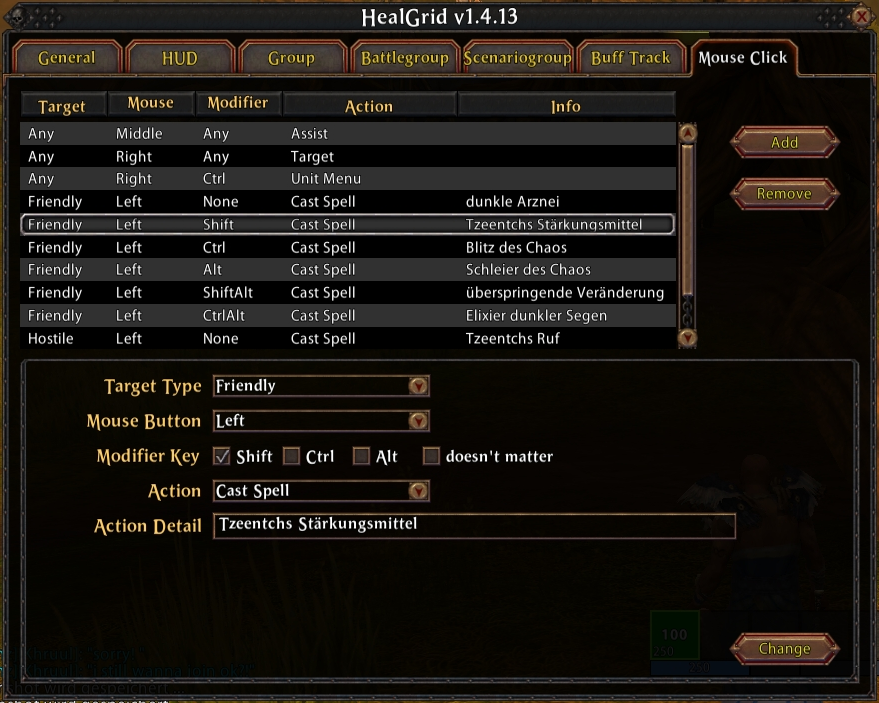
This tab allows you to set up so called "mouseclicks". This is, mapping various actions to your mouse buttons. The most prominent applications of mouseclicks is the so called click-casting.
To be done
To be done